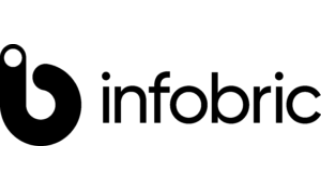
Infobric Fleet gives companies with a fleet of company vehicles the insight to optimise.
The company develops and sells digital solutions that simplify everyday life by supporting the decision-making process and increasing profitability for companies that offer benefit cars as part of their employee package.
Impact:
- Better control and streamlined fleet management
- Vehicle use optimisation and monitoring
- Complete mileage gathering and maintenance data
Key Result:
- 10-15% reduction in costs
Thanks to Infobric Fleet, a Sweden-based provider of M2M and telematics for digital vehicle systems, “companies with cars can finally find their way in the dark” with solutions that enable them to follow up and manage their vehicle fleets directly, via mobile or computer.
Use Google Maps solutions to monitor benefit cars
Sweden is a world leader when it comes to offering company cars, but the country has specific codes and rules around counting mileage for personal and professional usage. Private use of a company car must be clearly indicated in employment contracts, and is limited to 10 individual occasions and a maximum of 100 Swedish miles annually. To add to this already intricate set of regulations, there are many toll stations in the larger cities, which complicates the process of calculating who is responsible for paying. But it can all be worked out with a little monitoring. Infobric has made it its mission to help companies that offer benefit cars find their way in the dark by making compliance a product feature. Google Maps Platform was there to back up this promise with their renowned array of mapping technology. “Google was outstanding when it came to the map data and presentation of the data compared to the competitors,” says Magnus Öberg, CTO at Infobric Fleet.
The power of insight
There are around five million light vehicles in Sweden and company cars account for roughly 1.5 million-and around 500,000 are benefit cars. That’s a significant portion of the driving population. There’s a lot of fine tuning fleet managers can do to optimize costs. And visibility is the first step. So often in Sweden, car lease agreements have a mileage-limitation clause with notable additional costs in the case they are surpassed. “Fleet managers are often unaware of how much drivers are actually driving, and so are the drivers themselves. So when fleet managers have a clear idea of mileage limits and when drivers are reaching them, they can take steps to save money.” Underlines Öberg. And this is exactly where Infobric solutions come in. By connecting vehicles, gathering, processing and sharing this kind of data, they can see who is driving what and how far.
Counting the miles to total control
There are around five million light vehicles in Sweden and company cars account for roughly 1.5 million-and around 500,000 are benefit cars. That’s a significant portion of the driving population. There’s a lot of fine tuning fleet managers can do to optimize costs. And visibility is the first step. So often in Sweden, car lease agreements have a mileage-limitation clause with notable additional costs in the case they are surpassed. “Fleet managers are often unaware of how much drivers are actually driving, and so are the drivers themselves. So when fleet managers have a clear idea of mileage limits and when drivers are reaching them, they can take steps to save money.” Underlines Öberg. And this is exactly where Infobric solutions come in. By connecting vehicles, gathering, processing and sharing this kind of data, they can see who is driving what and how far.
” I think one of the key things with Google is that they keep improving the quality continuously with maps.”
—Magnus Öberg
CTO at Infobric Fleet
The road less traveled
Beyond the technology already in place, being able to offer customers a dynamic ecosystem that is able to learn and improve that means Infobric Fleet can keep refining both their level of sophistication and their added value. An excellent example of this is the Roads API that adds new information that adds a new level of insight at each turn. “Over the last few years we’ve been using the Roads API and we’ve noted an improvement in it’s quality. We are now able to track, not just roads, but really small passages down to meter level in a passage within a big city. If we need to know where a path is, we may not have position accuracy at that level, but with Google’s AI algorithms and Roads API, we feed it with history data, and can get quite a good resolution to get the tracking that we need for those passages.”
Keep moving, keep improving
As Infobric is a growing company with an expanding customer base that represents a diverse range of driving behaviours, the self-learning aspect of the Google Maps Platform is especially important: “For instance, customers may stop at some place in the countryside that has no address logged in the system. I’ve seen Google add the locations over time, and map quality improves. This means the Geocoding API is being heavily used,” says Öberg. “I think one of the key things with Google is that you keep improving the quality continuously with maps and that is really important” he concludes.